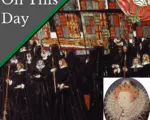
On this day in Tudor history, 28th April 1603, Queen Elizabeth I, the last Tudor monarch, was laid to rest at Westminster Abbey in a lavish funeral.
Find out more about her funeral…
[Read More...]
On this day in Tudor history, 28th April 1603, Queen Elizabeth I, the last Tudor monarch, was laid to rest at Westminster Abbey in a lavish funeral.
Find out more about her funeral…
[Read More...]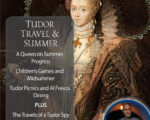
We’ve turned the corner and the warmer weather is now coming in! What did the Tudors do in the summer months, and where did they go? Enjoy this bumper magazine edition.
[Read More...]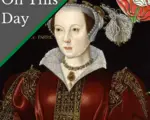
On this day in Tudor history, 25 April 1557, Tudor troublemaker Thomas Stafford, grandson of Margaret Pole, Countess of Salisbury, proclaimed himself “Protector of the Realm”. It didn’t go down well!
Find out why he did this, what happened and how it wasn’t his first brush with trouble…
[Read More...]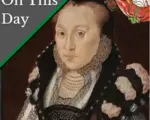
On this day in Tudor history, 20th April 1578, Lady Mary Keys (née Grey), sister of Lady Jane Grey and wife of Thomas Keys, died at her home in the parish of St Botolph without Aldgate, London.
Like her sisters, Mary had a sad life. Her secret marriage led to Elizabeth I imprisoning her and her husband, and they never saw each other again.
Find out more about the tiny Mary who was described as “crook-backed”, her marriage to a man who was said to be 6’8, and what happened to Mary and Thomas, in this video…
[Read More...]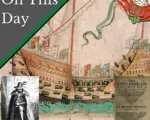
On this day in Tudor history, 16th April 1570, Gunpowder Plot conspirator Guy Fawkes was baptised in York.
In this video, I talk about how the Gunpowder Plot has its origins in the reign of Queen Elizabeth I and why these men were driven to try and blow up Westminster…
[Read More...]

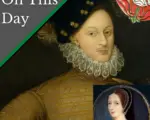
On this day in Tudor history, 12th April 1550, in King Edward VI’s reign, courtier and poet, Edward de Vere, 17th Earl of Oxford, was born.
In this video, I talk about Oxford, his not-so-nice personality, the idea that he was Elizabeth I’s son by Thomas Seymour. and the Oxfordian theory regarding the works of William Shakespeare…
[Read More...]
On this day in Tudor history, 11th April 1554, in the reign of the Catholic Queen Mary I, Sir Thomas Wyatt the Younger, son of poet and diplomat Sir Thomas Wyatt the Elder, was beheaded on Tower Hill after being found guilty of high treason.
Wyatt had led a rebellion which sought to depose the queen and to replace her with her half-sister Elizabeth, but he refused to implicate Elizabeth in the plot. He went to his death asserting her innocence.
Find out more about what happened and hear his final speech…
[Read More...]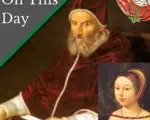
On this day in Tudor history, 10th April 1585, Pope Gregory XIII died from a fever. He was succeeded by Pope Sixtus V.
Pope Gregory is known for his reform of the calendar. He introduced what is now called the Gregorian Calendar, or Western or Christian Calendar, replacing the Julian Calendar, which had been used since 45 BC.
But why was this reform needed and how was it done?
[Read More...]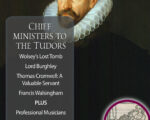
Who were the chief ministers in the Tudor period? What influence did they have over the people around them and the country as a whole?
[Read More...]
On this day in Tudor history, 22nd March 1582, gunner, mathematician and writer, William Bourne was buried at Gravesend in Kent.
This popular author, who was able to explain technical matters for the common man in his books, was also a gunner, mathematician and inventor, yet he received no university education. He also drew plans for a submarine, although he never built it.
Find out more about the fascinating William Bourne and his works in this talk…
[Read More...]
On this day in Tudor history, 21st March 1603, a dying Queen Elizabeth I finally took to her bed.
Elizabeth I had been queen since November 1558, but now she was dying. She had deep-rooted melancholy, couldn’t sleep and was refusing to eat. She spent her days lying on cushions in her withdrawing chamber. But on 21st March, she was finally persuaded to go to bed.
Find out more about these last days in this talk…
[Read More...]
On this day in Tudor history, 18th March 1554, Palm Sunday, the twenty-year-old Lady Elizabeth (the future Queen Elizabeth I) was escorted by barge from her home at Whitehall Palace along the River Thames to the Tower of London, and imprisoned there.
Elizabeth had been implicated in Wyatt’s Rebellion, a rebellion that sought to depose Queen Mary I and put Elizabeth, the queen’s half-sister, on the throne in her place.
Where was Elizabeth imprisoned? What happened to her? Find out more about Elizabeth’s arrest and her time in the Tower of London in this talk…
[Read More...]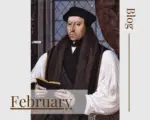

On this day in Tudor history, 19th February 1592, the Rose Theatre, an Elizabethan play house built by Philip Henslowe, was opened on Bankside in London.
Plays performed at the theatre included Shakespeare’s “Henry VI Part 1” and “Titus Andronicus”, Kyd’s “Spanish Tragedy”, and Marlowe’s “Doctor Faustus”, “The Jew of Malta” and “Tamburlaine the Great”. But, unfortunately, the Rose Theatre was abandoned by 1605.
Find out more about the Rose Theatre in this talk…
[Read More...]
Well, ok, perhaps love at second or third sight!
On this day in Tudor history, Saturday 17th February 1565, Mary, Queen of Scots, met and fell in love with Henry Stuart, Lord Darnley, at Wemyss Castle in Scotland. Just over 7 months later, the couple got married.
Find out more about the background of this meeting between Mary, Queen of Scots and Lord Darnley, Mary’s thoughts on Darnley, and what happened next, in this talk…
[Read More...]
On this day in Tudor history, 14th February 1539, Sir Nicholas Carew, a royal favourite for over 20 years, was tried for treason after being implicated in the Exeter Conspiracy. Spoilers – his trial didn’t go well.
But how did a man who’d been in royal favour for so long come to such a sticky end? Find out in this talk…
[Read More...]
On this day in history, 13th February 1608, prominent Tudor noblewoman and one of the richest people in England, Elizabeth Talbot, Countess of Shrewsbury, more commonly known as Bess of Hardwick, died at her home at Hardwick.
Bess of Hardwick is known for her building projects, which included Chatsworth and Hardwick Hall, her beautiful needlework and the fact that she and Shrewsbury were guardians of the captive Mary, Queen of Scots.
Find out more about this fascinating Tudor lady in this talk…
[Read More...]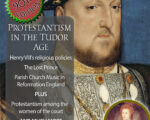
IT’S OUR 90th EDITION! This month’s magazine is themed on the Protestant faith which emerged during the Tudor period. It’s yet another amazing magazine and we know you’ll enjoy it.
[Read More...]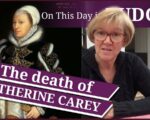
On this day in Tudor history, 15th January 1569, in the reign of Queen Elizabeth I, Catherine Knollys (née Carey), wife of Sir Francis Knollys, daughter of Mary Boleyn, and cousin of the queen, died at Hampton Court Palace. She was about 45 years old.
Sadly, Queen Elizabeth I had kept Catherine and her beloved husband, Sir Francis Knollys, apart during Catherine’s final day.
Find out more about Catherine’s final days, the queen’s cruelty, Francis’s frustration, and Catherine’s lavish burial, which was paid for by the queen, in this talk…
[Read More...]
On this day in Tudor history, 7th January 1558, in the reign of Queen Mary I, England lost Calais to the French.
It was a devastating blow as Calais had been held by England for over 200 years and was an important port for English wool exports. Mary I was said to have exclaimed ““When I am dead and opened, you shall find ‘Philip’ and ‘Calais’ lying in my heart”.
Find out exactly what happened in this talk…
[Read More...]


On this day in Tudor history, 22nd December 1557, Protestant martyrs John Rough and Margaret Mearing, were burnt at Smithfield for heresy.
John Rough was a Scot who’d encouraged John Knox to be a pastor, but ended in days in England. Interestingly, the woman he died with was a woman he’d excommunicated from his congregation, believing her to be a spy. Although she’d been angry with her treatment, she was not the spy who betrayed him, she visited Rough in prison and was arrested after she tried to confront the real spy.
Find out about John Rough’s life and what brought him to England, how he’d come to be arrested, and what happened with Margaret Mearing, in this talk…
[Read More...]
Glastonbury Abbey in Tudor times was a majestic powerhouse of monastic prayer. Learn all about Abbot Richard Whiting
[Read More...]
On this day in Tudor history, 16th (or possibly the 18th) December 1503, George Grey, 2nd Earl of Kent, died at Ampthill, Bedfordshire.
Grey served as a soldier under Henry VII, was on the king’s council, and served him as Constable of Northampton Castle and as a judge at the trial of Edward, Earl of Warwick in 1499.
He was also married to a sister of Elizabeth Woodville.
Grey also managed to retain royal favour on Henry VII’s accession even though he’d been rewarded by Richard III.
Find out more about George Grey in this talk…
[Read More...]

On this day in Tudor history, 22nd November 1594, naval commander, privateer and explorer, Sir Martin Frobisher, died at Plymouth. He died of gangrene after having been shot in the thigh during hand-to-hand combat during a siege.
Frobisher is best known for his three voyages in search of the Northwest Passage and his naval service during the 1588 Spanish Armada, for which he was knighted.
Find out all about the life and career of this Tudor explorer in this talk…
[Read More...]
On this day in Tudor history, 18th November 1559, Ralph Baynes (Baines), Bishop of Coventry and Lichfield, died.
Baynes had been actively involved in the persecutions of Protestants in Mary I’s reign, examining many well-known martyrs and featuring in John Foxe’s “Book of Martyrs”, but ended his days imprisoned in the home of Edmund Grindal, Bishop of London – why?
Find out more about Ralph Baynes, his life and career, and how he came to be deprived of his bishopric and die the way he did, in this talk…
[Read More...]